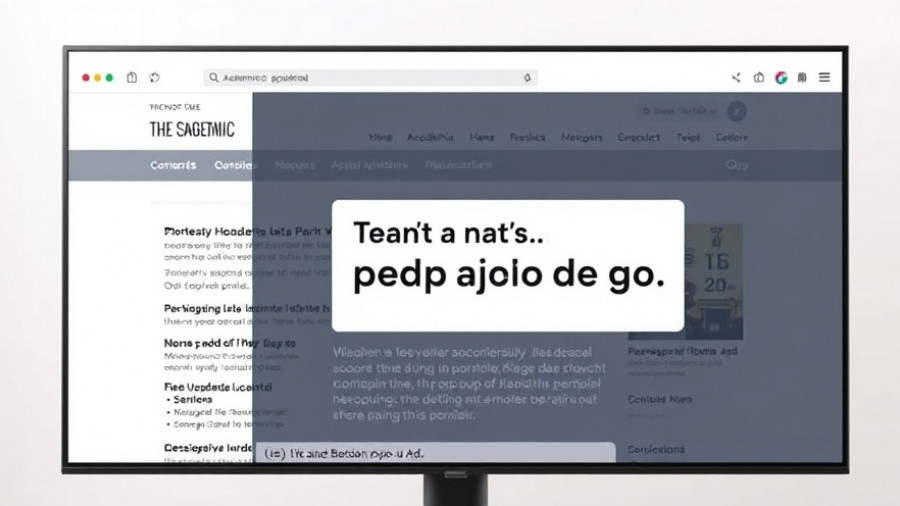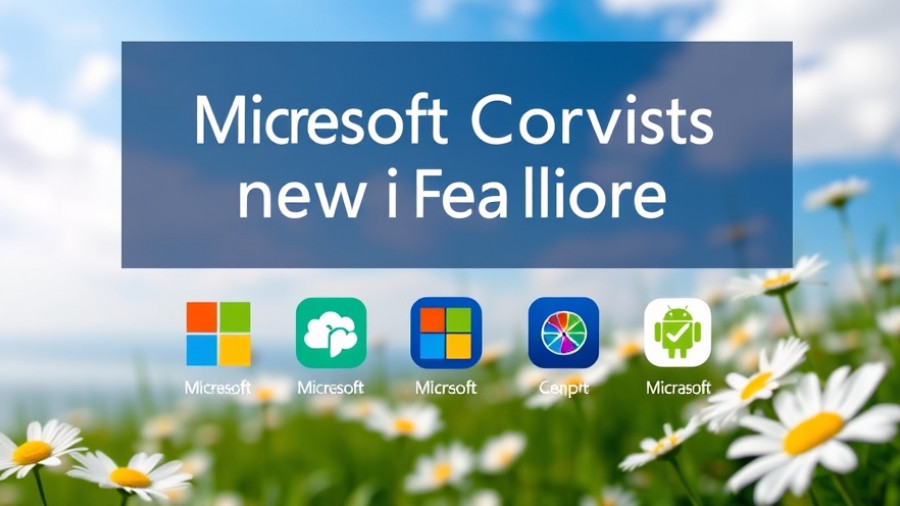
Microsoft’s New AI Models: Competing with OpenAI to Transform Conversational AI
In the rapidly evolving world of artificial intelligence, Microsoft recently unveiled its own AI models, marking a significant moment in the tech industry. With the release of MAI-Voice 1 and MAI-1-preview, Microsoft is stepping into direct competition with OpenAI, its long-time partner, by introducing innovative tools aimed at enhancing conversational AI applications.
Understanding Microsoft's New AI Models
MAI-Voice 1 focuses on generating high-quality synthetic speech that feels remarkably natural. This model is now available for users to experiment with in Microsoft's Copilot Daily, Copilot Podcasts, and Copilot Labs. Not only does MAI-Voice 1 excel in producing lifelike audio using a single GPU for a minute of content, but it also supports tailored applications, such as storytelling and guided meditation.
On the other hand, MAI-1-preview is a generalist model designed for handling everyday prompts, showcasing Microsoft's ambition to diversify its AI product offerings. Currently, this model is in community testing, allowing user feedback to shape its evolution. Microsoft has geared both models primarily toward consumer applications, a strategic shift that highlights its intent to expand beyond mere cloud infrastructure support.
The Shift from Partner to Competitor
Microsoft's decision to develop its generative AI models represents a critical pivot in its business strategy. Traditionally, the company has relied on OpenAI, which does the heavy lifting of model innovation. However, with the in-house training of MAI-1-preview on a powerful infrastructure of NVIDIA H100 GPUs, Microsoft is asserting its capabilities in AI development. This move may transform the perception of Microsoft from a supportive partner to a formidable competitor in the AI landscape.
Significance of Advanced AI Infrastructure
The recent advancements in AI owe much to the robust infrastructure supporting such technology. For Microsoft, the new GB200 cluster of NVIDIA chips is a game changer, enhancing compute power for AI processing. Enhanced infrastructure means improved model performance and capabilities that could significantly reshape user experiences in applications powered by AI.
Potential Implications for the AI Market
This development not only signifies Microsoft's ambitions but also hints at evolving dynamics in the AI industry. With competitors like Anthropic, DeepSeek, and Meta also in the field, Microsoft's in-house AI offerings could accelerate the pace of innovation and competition. As Microsoft takes bold strides in the realm of conversational AI, companies may begin to reevaluate their partnerships and strategies to keep pace with an increasingly competitive market.
Future Trends in AI Clusters
The AI industry is at a turning point, where advancements are driven by rapidly evolving technologies and a push for more human-like interactions. Predictions suggest that as companies like Microsoft enhance their AI capabilities, future models will likely focus on more personalized interactions, greater adaptability, and even emotional intelligence. This leap could usher in an era of AI where users feel even more connected to the digital assistants, reshaping how we communicate and interact with technology in our daily lives.
Conclusion: What Lies Ahead for Microsoft AI
Microsoft's unveiling of MAI-Voice 1 and MAI-1-preview is indicative of its strong ambitions within the AI sphere. As it aims to reach billions through innovative AI solutions, the tech giant will likely continue refining its tools based on feedback and technological advancements. With the landscape poised for rapid changes, staying informed about these developments will be crucial for both consumers and businesses alike.
 Add Row
Add Row  Add
Add 




Write A Comment